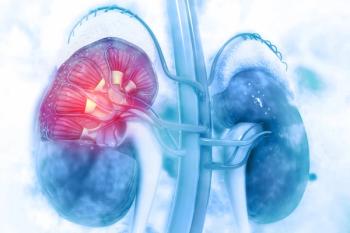
Savolitinib Active in MET-Driven Advanced Papillary RCC
A phase II study has shown that savolitinib is active in a subgroup of patients with papillary renal cell carcinoma with gene amplification or mutations in the MET pathway.
The highly selective MET tyrosine kinase inhibitor savolitinib was active and well tolerated in a subgroup of patients with advanced papillary renal cell carcinoma (PRCC) that was driven by gene amplification or mutations in the MET pathway, according to the results of a single-arm,
“Patients experiencing responses in this study were found only in the group with MET-driven disease, indicating that savolitinib may suppress MET-driven tumor growth,” wrote Toni K. Choueiri, MD, of Lank Center for Genitourinary Oncology at Dana-Farber Cancer Institute, and colleagues. “These results confirm that savolitinib, a potent and selective small-molecule MET kinase inhibitor, holds promise as a personalized treatment for patients with metastatic MET-driven PRCC.”
The prognosis for patients with advanced PRCC is poor and there are currently few treatment options. A previous study of the MET-targeting drug foretinib showed a higher rate of tumor responses in patients with MET mutations, suggesting a role for these drugs in patients with MET-driven disease. With this study, Choueiri and colleagues evaluated the efficacy and safety of savolitinib and sought to assess if the drug’s activity was linked with MET pathway alterations.
The study included 109 patients with advanced or metastatic PRCC. Patients received 600 mg oral savolitinib once daily. Patients were classified as having MET-independent disease (42%) or MET-driven disease (40%) defined as any of the following: chromosome 7 copy gain, focal MET or HGF gene amplification, or MET kinase domain mutations. Seventeen percent of patients had unknown MET status.
The overall response rate was 7%. Among patients with MET-driven disease, 18% had confirmed partial response compared with no patients with MET-independent disease (P = .002). One-half of patients with MET-driven disease had stable disease compared with 24% of patients with MET-independent disease.
Patients with MET-driven disease also had significantly improved progression-free survival (PFS). The median PFS for patients with MET-driven disease was 6.2 months compared with 1.4 months for MET-independent disease (HR, 0.33; 95% CI, 0.20–0.52; P < .001).
The researchers noted that 6 of the 8 patients that achieved partial response were still responding at data cutoff with a duration of response ranging from 2.4 to 16.4 months.
The most frequent adverse events associated with savolitinib were nausea, fatigue, vomiting, and peripheral edema.
“These data support the hypothesis that savolitinib has antitumor activity in patients with MET-driven PRCC and justifies the recently launched phase III trial comparing savolitinib with sunitinib in a population of patients with MET-driven PRCC,” the researchers wrote.
Newsletter
Stay up to date on recent advances in the multidisciplinary approach to cancer.
















































































